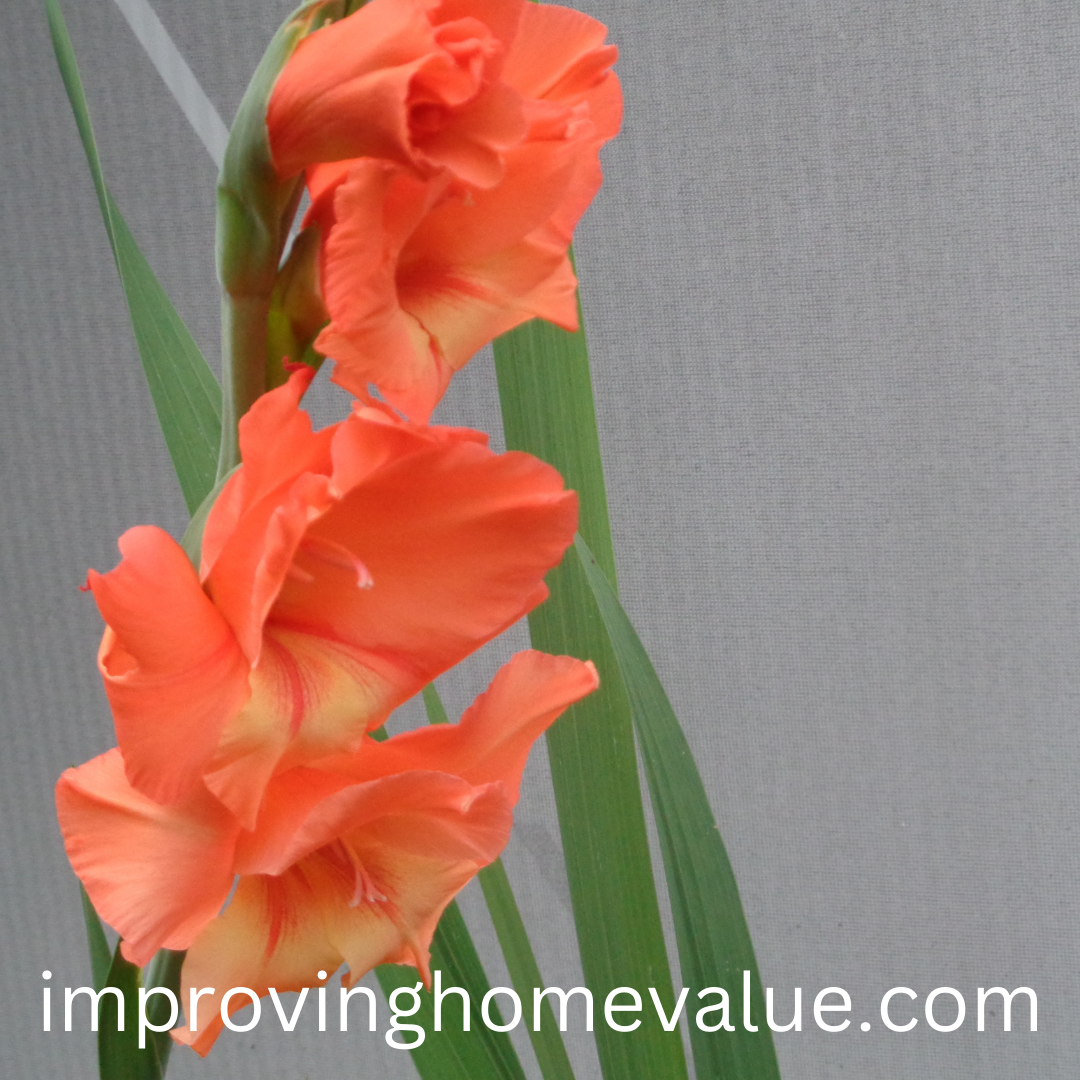Gladiolus love the sun, so pick a spot where they will get full sunlight. They’re sun worshippers, no doubt about it.
When it comes to soil, these beauties prefer well-drained soil. Sandy or loamy soil works wonders. Just make sure to avoid heavy clay soils unless you also add to them some organic matter.
Watering gladiolus isn’t complicated. They like an even supply of moisture, particularly during their growing and flowering periods. Too much water can lead to corm rot, so be careful not to overwater.
As for fertilizer, gladiolus is pretty straightforward. Use a balanced fertilizer (something like a 10-10-10) when planting and then again when the flower spikes start to emerge. Remember, more isn’t always better, so stick to the recommended amounts.
Timing is everything with gladiolus. The best time to plant them is in the spring after any threat of frost has passed. This way, you’ll enjoy their stunning blooms in the summer.
Growth and Varieties of Gladiolus
When it comes to height, gladiolus can reach anywhere between 2 to 5 feet tall, making them quite the statement in any garden. Even though these tall beauties might look a bit wobbly, they’re surprisingly sturdy – but we’ll get to staking later.
In terms of colors and varieties, you’re spoiled for choice. Gladiolus come in nearly every color imaginable – from bold reds and bright yellows to delicate pinks and soft pastels. Popular varieties include ‘White Prosperity’ with its pure white blooms, ‘Peter Pears’ that offers a lovely coral hue, and ‘Purple Flora’ which boasts striking deep purple blossoms.
Now, let’s talk staking. With great height comes the need for a bit of support. Gladiolus might need some staking to keep them upright, particularly in windy areas. A simple bamboo stake works fine. Just gently tie the plants to the stake, being careful not to damage the stems.
Among the favorites are hybrids and specialty varieties like the butterfly gladiolus with its multi-colored and ruffled petals. They add so much flair and personality to garden spaces.

Maintaining Healthy Gladiolus
Pests can be a real headache for gladiolus growers. Aphids, thrips, and spider mites are common culprits. Regularly check your plants and, if you spot these tiny troublemakers, use insecticidal soap or neem oil as a natural remedy.
Diseases like Botrytis blight and Fusarium wilt can affect gladiolus too. Look out for spots on the leaves or stems and any unusual wilting. Removing and disposing of infected parts can help keep these diseases in check. In severe cases, you might need a fungicide.
Preventive measures can make a big difference. Planting gladiolus in well-ventilated areas reduces the risk of disease. Proper spacing and avoiding overhead watering also help. Rotate planting locations each year to prevent soil-borne diseases.
For more natural approaches, consider using companion planting to deter pests. Marigolds and garlic are great choices to plant near gladiolus as they can repel many harmful insects.
Gladiolus are a plant that can give you some eye catching beauty around your home or in you gardens, so be sure to give them a try.
